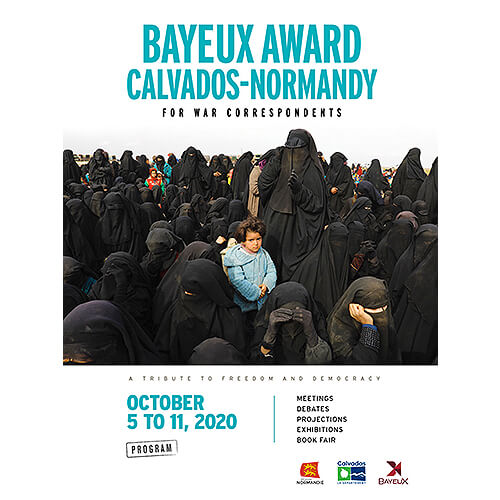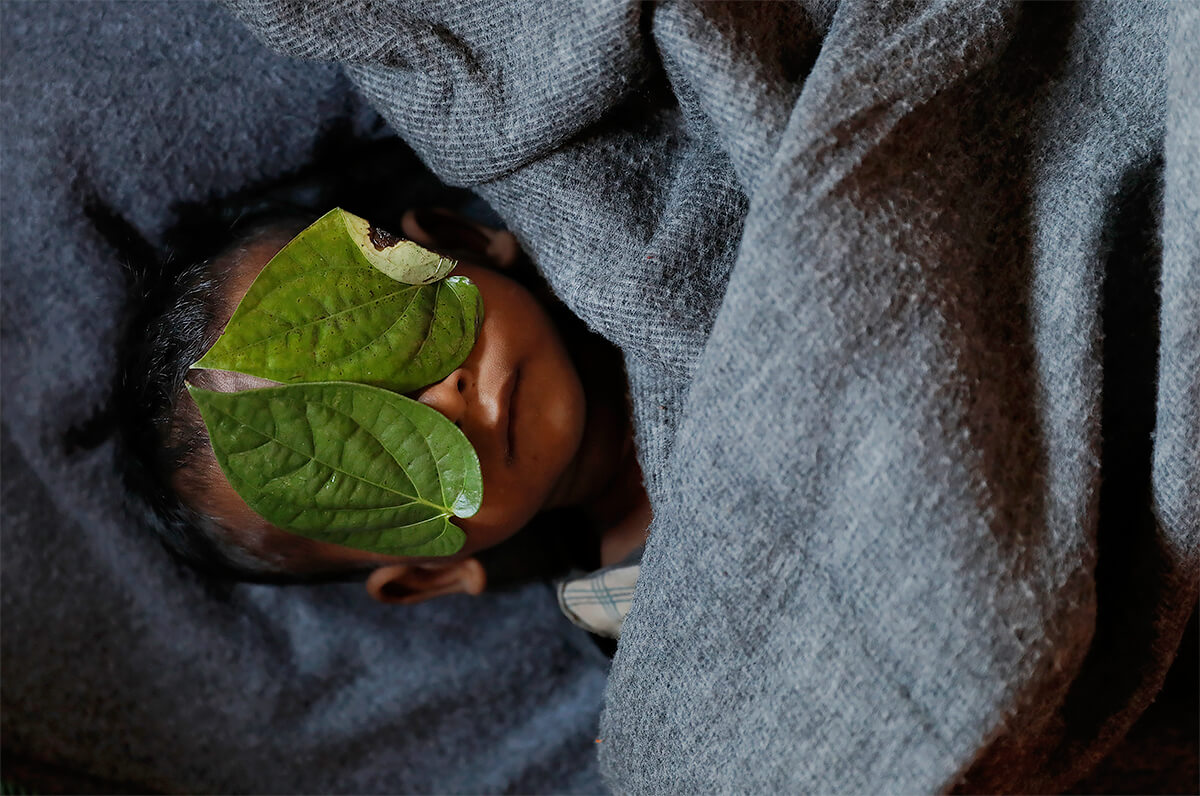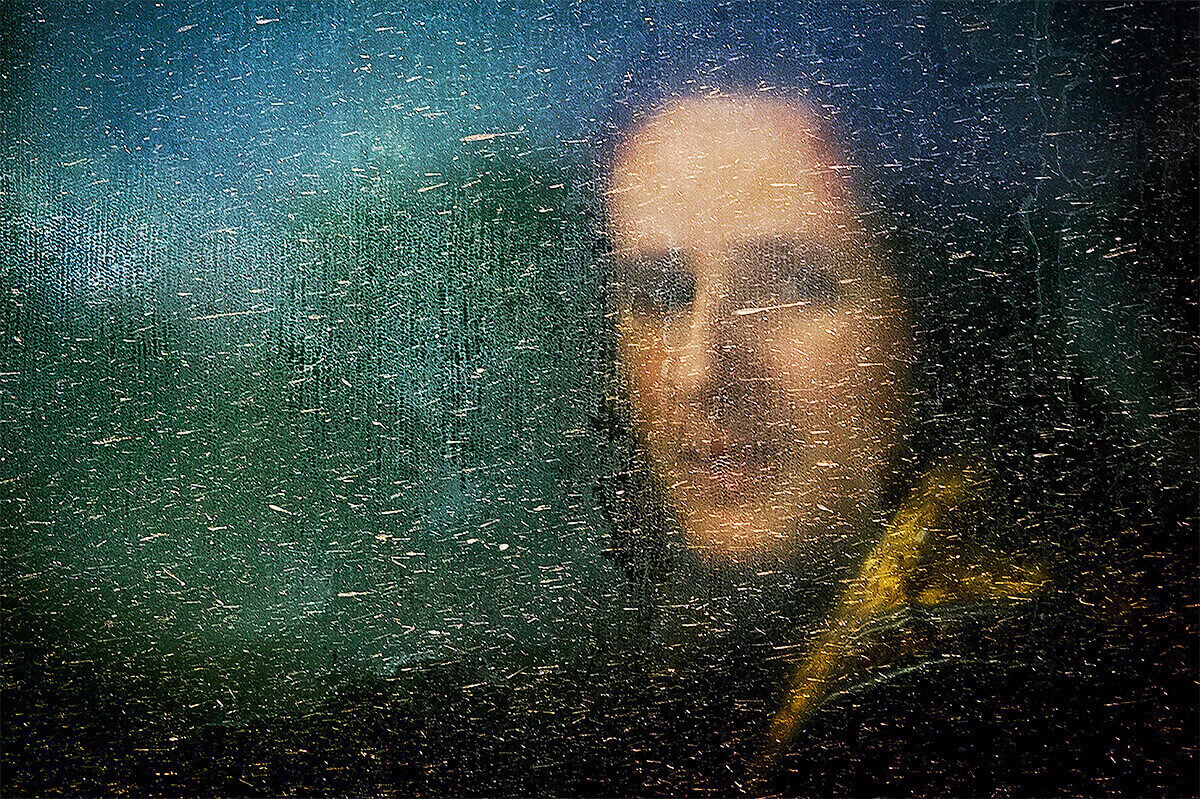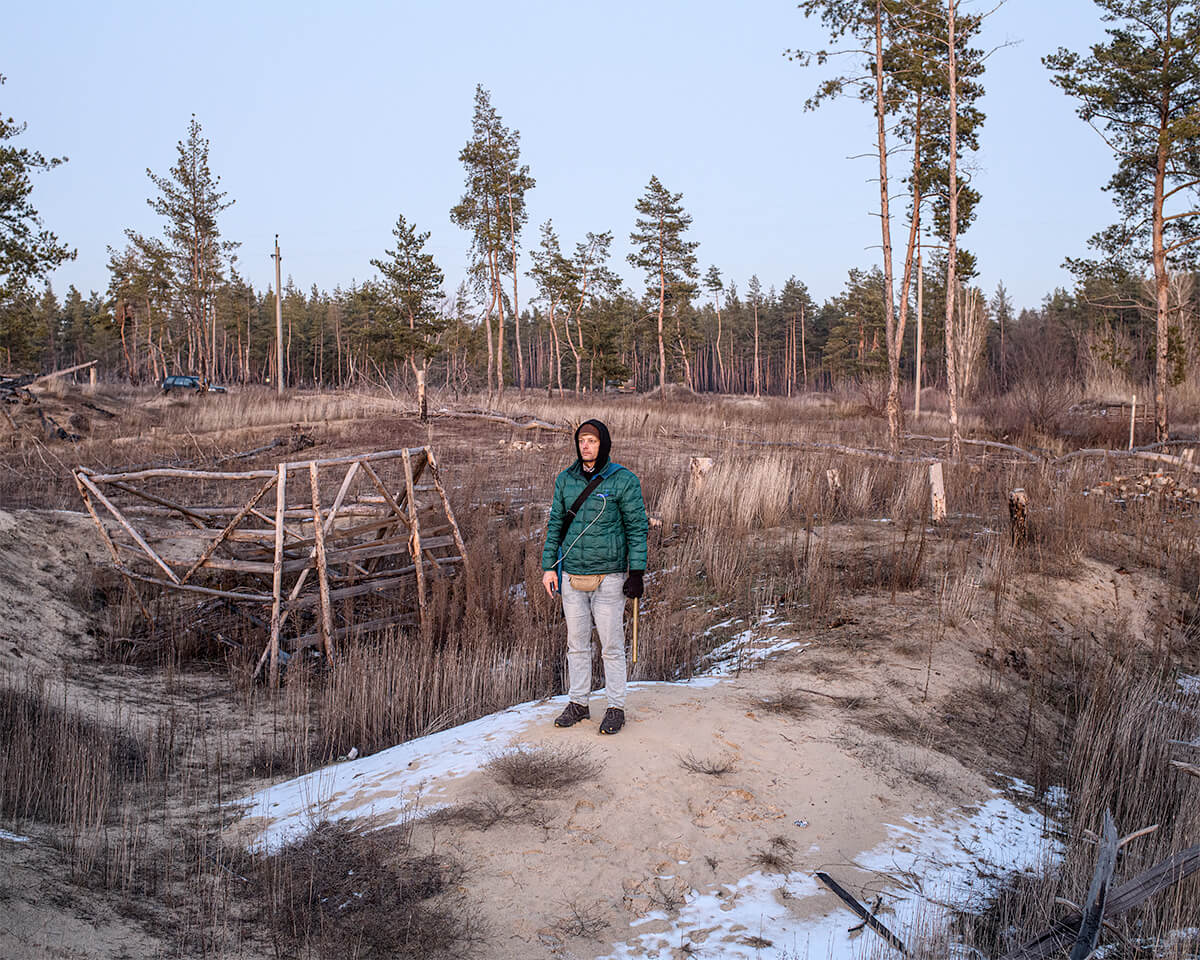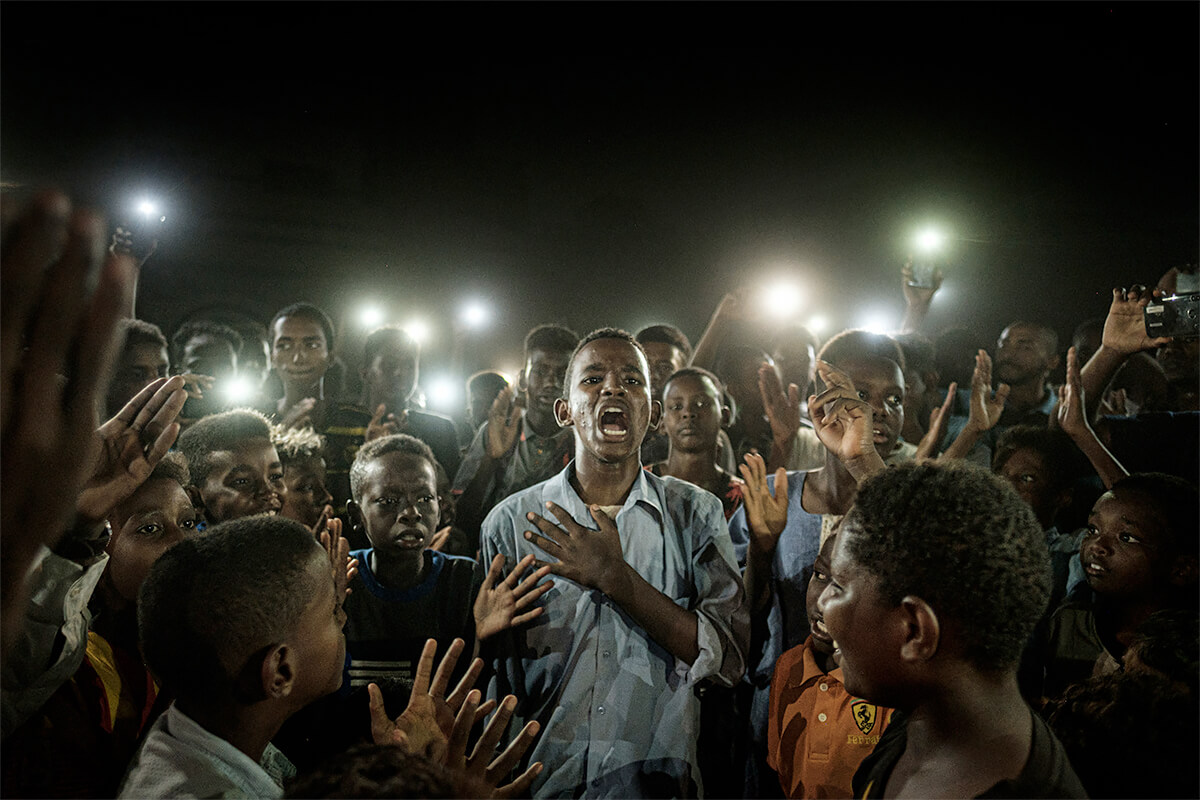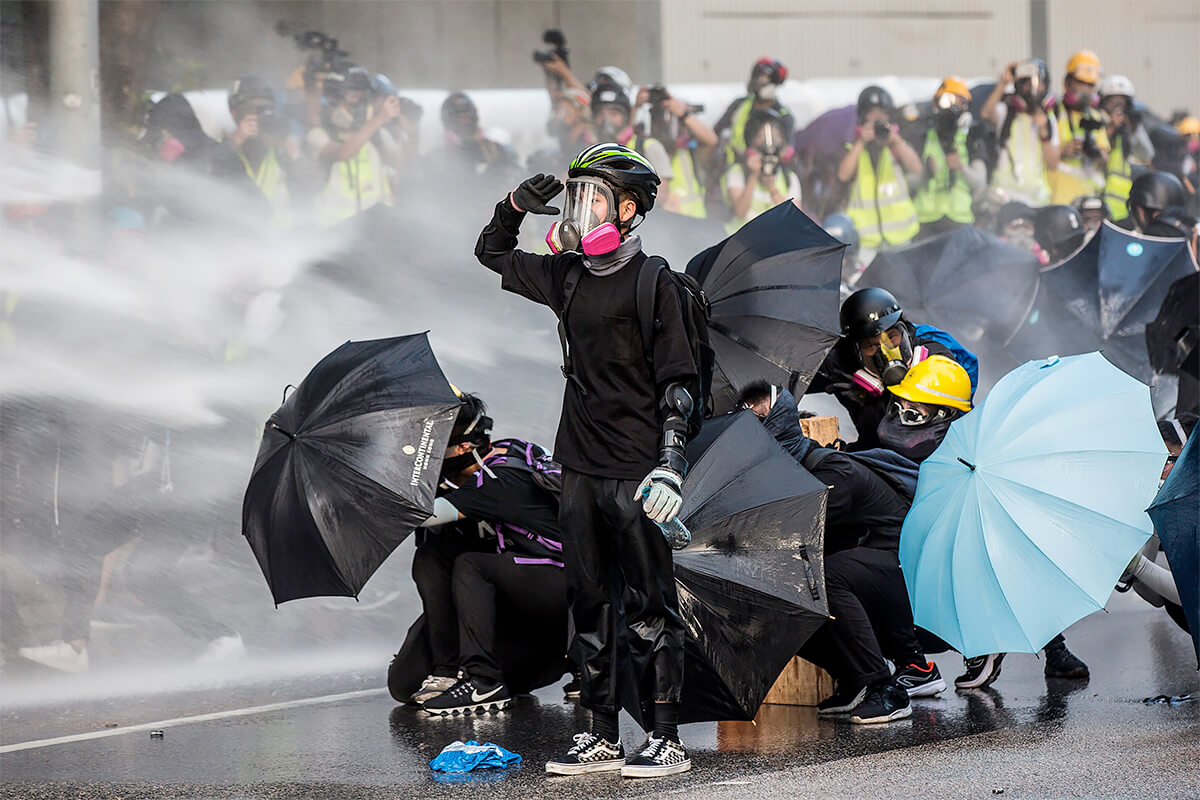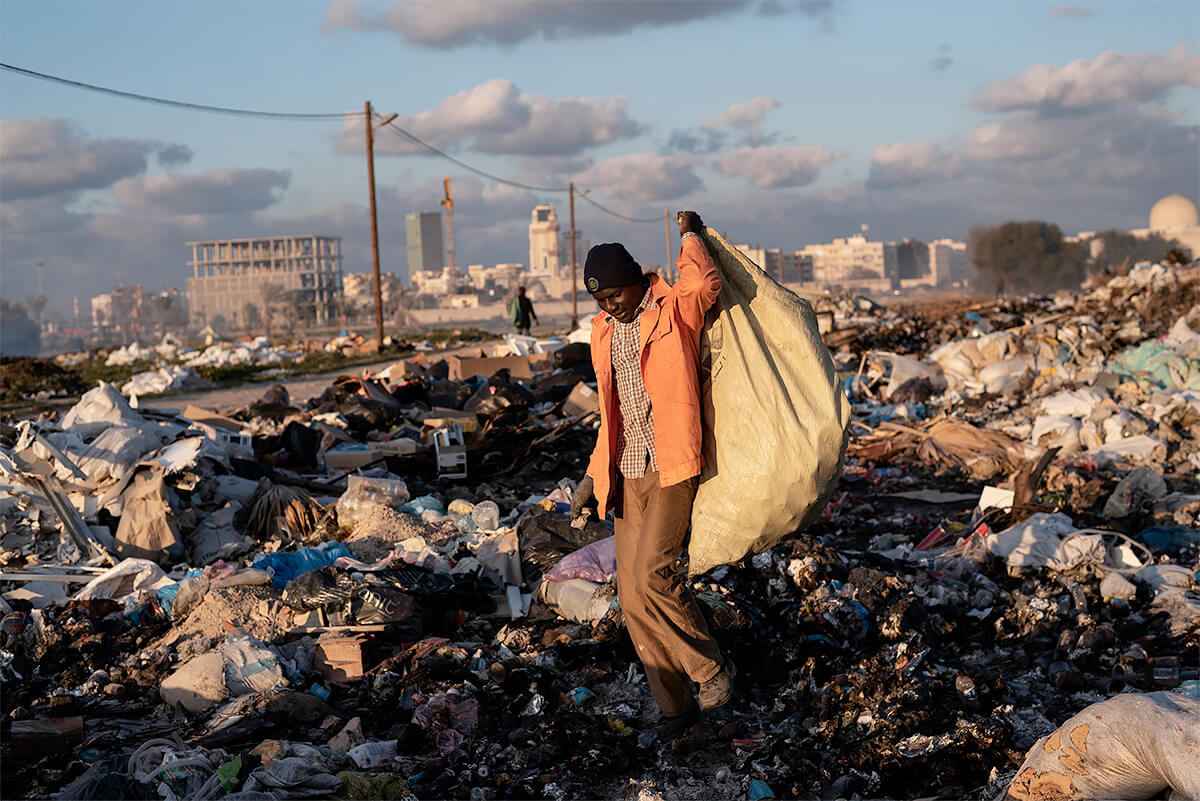Break indifference to conflicts. It's in this logic that the Bayeux Calvados-Normandy Award for War Correspondents was created. For the past 27 years Bayeux, a place that exemplifies peace and freedom, has been paying tribute to those who prevent oppressors from acting undisturbed and with impunity. Every year the Town of Bayeux, the Department of Calvados, the Normandy Region and their partners join forces to hold a unique event dedicated to a unique profession. The job of war correspondents is essential and serves as a barometer for democracies, yet it is little known and can be subject to abuse.
Over the course of a week the first town in France to be liberated after D-Day, which saw figures such as Capa and Hemingway passing through, will turn into a gigantic newsroom with 350 journalists from all over the world. In this epoch of fast and fake news, some of the foremost names in the world's leading news organisations will join with top photographers as well as reporters starting out in their careers and take time out to shine a light on their work, and by extension on the most momentous and the most obscure conflicts going on today. They will give awards to the best reports and pay tribute to those of their colleagues who have tragically lost their lives while carrying out their dangerous work.
Although for many months it was feared the Covid-19 pandemic would prevent the 27th edition from being held, it has also served to reinforce our mission. The virus has obviously neither halted conflicts nor reined in the ambitions of the enemies of democracy - quite the reverse. It has rarely been so vital to talk about the areas where chaos reigns, rarely so important to highlight the mission of those who tell the story and the essential role of reporting from the field. This has been shown in the clearest possible way by the unwavering support of all the partners of the Bayeux award, and by the indefatigable enthusiasm of our jury president Ed Vulliamy who considers the event to be the Oscars of journalism.
The format for the new edition has been modified but the content is as dense as ever*: there are events for schools, residencies organised in partnership with the Normandy Region, and digital projects have been developed. To summarise, there will be three discussion evenings, an award ceremony evening, documentary screenings, films, educational activities, a book fair, special programmes on Radio France, the unveiling of a commemorative stone at the Reporters' Memorial and five new exhibitions including one called Imagine, created specially for Bayeux by former president Gary Knight.
We wish you all a week full of news, discoveries and exchange.
*at the time of program publication, subject to the public health situation in October.
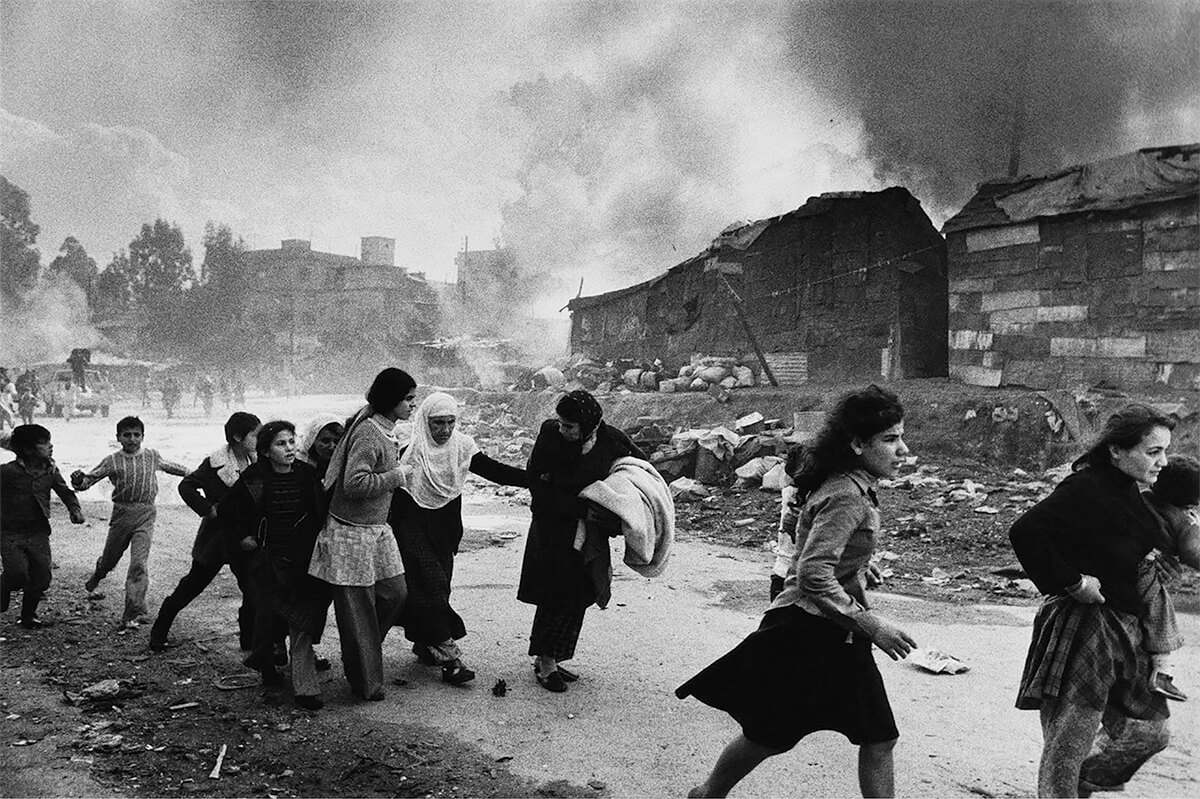
A child among the women of Jihadists gathered in the desert by the Kurds. © Don McCullin
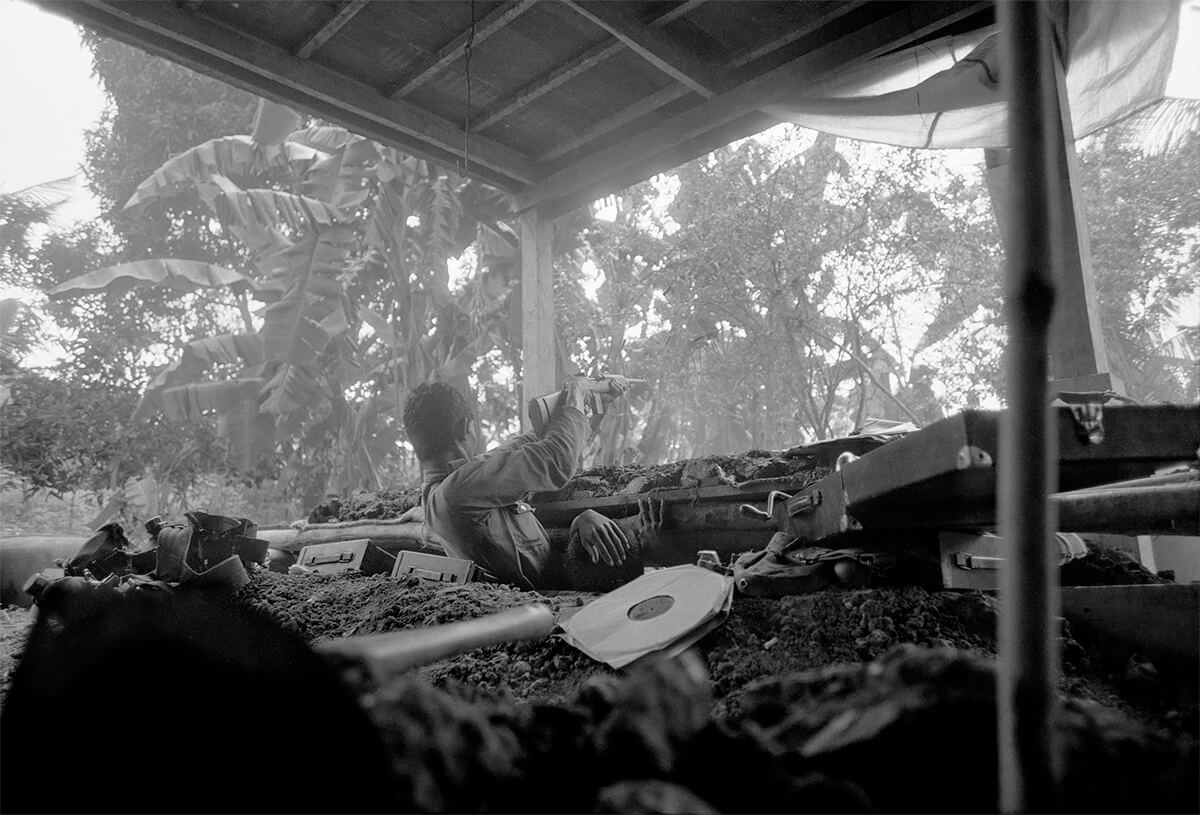
A government soldier firing his outdated M1 carbine at the Khmer Rouge from a fox hole. Kien Svay, Route 1 August 1973 © Roland Neveu / VII
In 2003 Gary Knight returned from Iraq after photographing the US invasion and the overthrow of Saddam Hussein. Like many of his colleagues, covering war was how Knight defined and shaped his career. This time however it felt different, he was exhausted by violence and he began to think about peace.
Reflecting on all the countries I had covered during wartime, I couldn't say that peace had proved to be an unmitigated success. In some cases, the best that could be said was that peace was preferable only to war — a notion which struck me as a very low benchmark. The reality of peace is flawed. The rewards of peace are elusive for the men and women who live in the post-conflict societies of our time. Why is it so difficult to make a good peace when it is so easy to imagine?
It was this idea that was the inspiration for Imagine: Reflections on Peace, a project that encourages discourse and conversation around peace building and ending conflict; a curation of searing images and trenchant essays that show both micro and macro views of peace, with its uneven degrees of economic success, political stability, and social harmony.
The VII Foundation asked more than a dozen renowned reporters and photojournalists to revisit countries with which they had become achingly familiar during times of brutal conflict. The task was to see peace through the prism of their journalistic experience.
The 400-page book is published in English and French and distributed throughout the United States and Europe. The exhibition of over 150 images shows bodies of work from photographers whose lives have been dedicated to covering war and its aftermath. We have essays from Gilles Peress in Northern Ireland and Stephen Ferry in Colombia. Don McCullin gives us a visceral view of Beirut in war, and Nichole Sobecki takes us to its streets today. Ron Haviv closely followed the war in Bosnia and a generation later, finds the changes there much fewer than expected. Jack Picone returns to Rwanda that he last visited in the throws of genocide, and is surprised to find a nation intent on pursuing peace and prosperity. Roland Neveu was in Cambodia when the Khmer Rouge took over Phnom Penh; 45 years later, Gary Knight photographs Cambodians who still live in the wake of that war. Finally, through Nicole Tung's lens, we get glimpses of the emerging peace that can be found in the recent conflicts in Iraq and Syria.
The VII Foundation was established in 2001 to challenge complex social, economic, environmental and human rights issues through documentary non-fiction storytelling and education
Leaves cover the face of 11 month old Rohingye refugee Abdul Aziz after his body was brought back to family shelter at Balukhali refugee camp near Cox's Bazar, Bangladesh few hours after he died December 4, 2017. Adbul Aziz, whose family fled Myanmar some two months ago, died at local clinic after suffering from high fever and severe cough for ten days, his mother said. Picture taken December 4, 2017.
Through the Looking Glass is a retrospective look at 25 years of Damir Sagolj's work as a photojournalist. The exhibition, curated by the author, cuts through his career filled with shattered lives, pain and sorrow. In over 50 pictures, we look through Damir's lens at an ordinary man caught in the conflict, and its aftermath. His lens is often forced to look in wrong direction, away from the action and pointed towards the victim that is almost always captured in the middle of Damir's frame, surrounded by broken glass, bullet holes or body bags.
Damir Sagolj is a Bosnian national born and raised in Sarajevo. After living with his family and studying power engineering in Moscow, Damir returned to his hometown Sarajevo just before the war broke in 1992. As the Bosnian war was coming to its end in 1995, Damir was a soldier whose engineering career seemed like a distant dream shattered by a nightmare - this is when he turned to photojournalism.
Damir joined Reuters in early 1996 as their Bosnia based photographer. First international assignments came in 1997 - a civil conflict in Albania and a trip to Iran to which Damir will return numerous times. The assignments never stopped. Damir spent most of the first decade of his career covering conflicts in Balkans and Middle East - mostly Iraq, Lebanon, Afghanistan, Israel and Palestine - but also other major international news and sport stories across the world.
In 2009 Damir moves to Bangkok, Thailand and focuses on news stories in Asia. Aside from stories in China and among other international assignments, Damir covers war on drugs in Philippines, Rohingya refugee crisis in Myanmar and Bangladesh tensions in and around North Korea...
In late 2018 Damir leaves Reuters and returns to Sarajevo where he currently teaches photography at the Academy of Performing Arts of the University of Sarajevo.
Damir was a 2004 Pulitzer Prize finalist for his Iraq war coverage and 2018 Pulitzer Prize winner as part of Reuters team that covered the Rohingya crisis. Damir's work received other awards including World Press Photo, Pictures of the Year International (POYi), CHIPP, SOPA, Overseas Press Club...
Vadim, on a former Ukrainian military position called Stalingrad, along the P22 road, at the entrance to the town of Makarove. Donbass. Ukraine.
Vadim is the person you don't see. He's in the shadows behind the journalists: the Fixer. Without him there would be no in-depth investigations and no pictures.
He prepares the ground in advance, identifies the key people for the reports and arranges the logistics. He battles to obtain permissions in the field, translates, ensures the team's safety and is constantly at the journalists' sides. And once the work is finished, as he's the only one to stay, he has to deal with the consequences of the stories that are published. He is vital.
Vadim was born in Donetsk, in the Donbass region of Ukraine. The region is at war today. As an adolescent he lived through the fall of communism and the resulting upheavals. In the 1990s he left to study in England. In 2011 and 2013 he studied art and design at the Condé School in Paris. Meanwhile he opened an extreme sports shop in the centre of Donetsk, employing 20 people. Business was thriving.
When the Revolution of Dignity began in Kiev in 2013 in Independence Square, he left and decided to film what was happening. A story about the Berkut, the Ukrainian riot police, became his first short film. He would follow all the events. Then he returned to Donetsk, and war began. He was noticed by journalists. He spoke several languages, was enterprising, careful without being afraid, and had a good network. He was creative and above all, funny. He quickly became recognised as one of the best fixers.
In Ukraine, he worked for the biggest titles Le Monde, Paris Match, Le Figaro, Le Figaro Magazine, Elle, Marie-Claire, Arte, TF1, Bildt, M6, etc. But at the same time he was losing everything. His shop closed and it wasn't long before he could no longer live at home in Donetsk. A pro-Russian separatist republic, the DNR (People's Republic of Donetsk), was founded. War had arrived, and Vadim was struggling to survive. One report followed another. The war had become his day-to-day life, and he was recording it alongside his work.
He was looking for his own voice in his own way, outside journalistic conventions. Using video, film and digital photography, installations, collected objects, visual experiments, sketches and sound recordings, he has created a rough-edged work out of the chaos of war in order to try to understand how it has changed him.
Exhibition curated by Sara.H Danguis et Guillaume Herbaut
People chant slogans as a young man recites a poem, illuminated by mobile phones, before the opposition's direct dialog with people in Khartoum on June 19, 2019. - People chanted slogans including revolution and civil as the young man recited a poem about revolution.
Pro-democracy protesters react as police fire water cannons outside the government headquarters in Hong Kong on September 15, 2019. - Hong Kong riot police fired tear gas and water cannons on September 15 at hardcore pro-democracy protesters hurling rocks and petrol bombs, in a return to the political chaos plaguing the city.
From Chile to Hong Kong via Guinea... The decade which began in 2010, marked by the Arab Spring movements, ended with a new wave of protest movements throughout the world. AFP looks back to the Arab world, from Sudan and Algeria where popular movements have led to the removal of heads of state, to Iraq and Lebanon, shaken by unprecedented dissent. The exhibition then takes us to Bolivia, Ecuador and Chile in Latin America. And of course to Hong Kong, where for seven months immense and sometimes violent demonstrations convulsed the semi-autonomous territory, leaving the city profoundly divided. And finally, the shock wave generated by the death of African-American George Floyd on 25 May has led to multiple demonstrations across the United States and throughout the world in protest against racism and police brutality.
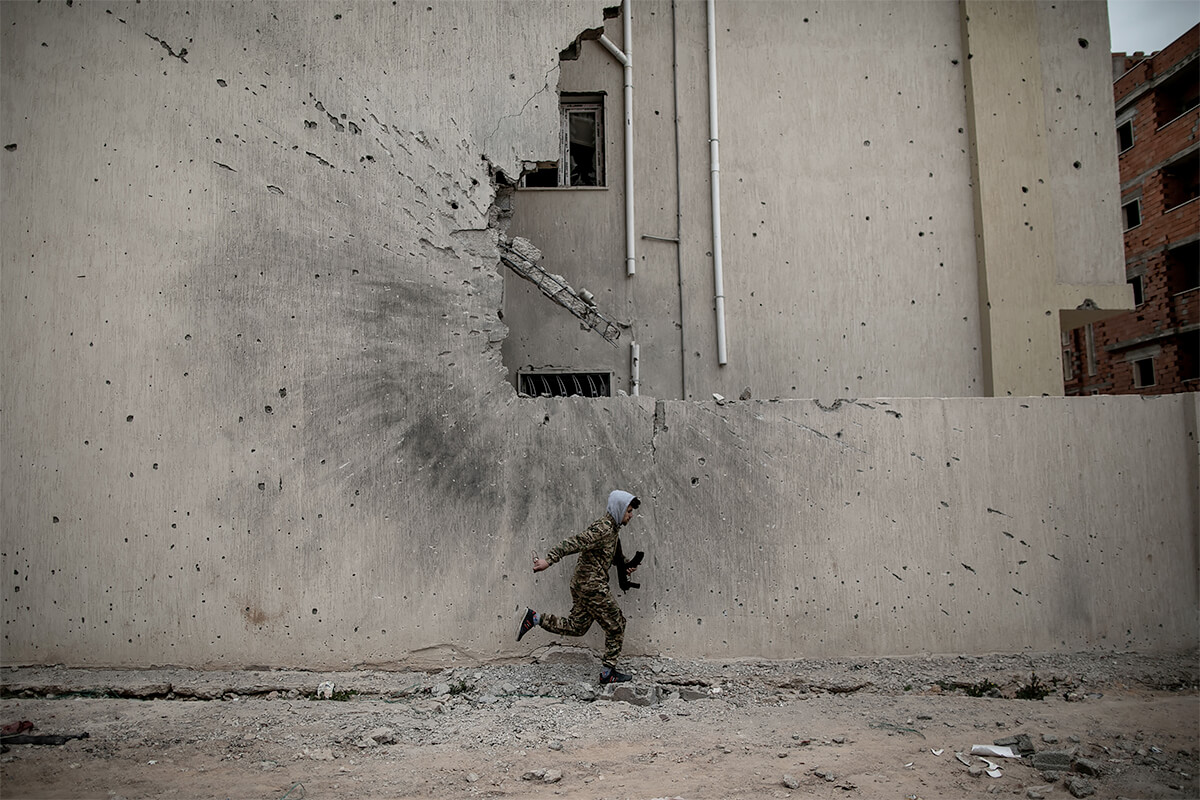
TRIPOLI, Feb. 17, 2020: A fighters of the Government of National Accord (GNA) takes cover from LNA snipers at a frontline in Tripoli. Feb 17, 2020. Libyans celibrate the 9th anniversary of the revolution against the Libyan leader Muammar Ghaddafi which sparked on February 17, 2011. Libya has been suffering from civil wars and armed conflicts eversince.
Libya, Tripoli - January 17th, 2020 - Mohammed, from Mali; Lives in Libya since 2015 and aims to return to his country but at the moment hasn't enough money. He arrived in the country to escape the war and to find work to sustain him and his family; since hee arrived in Libya he found work as a laborer for the municipality, but due to the low payment, he also collects scrap metals in the dump close the entering of the city to gain some other money. 1 Kg of metal is paid 1 dinar.
The majority of migrants in Libya came here to work: others, seeking asylum, came here to attempt to make the crossing to the shores of Europe. Whatever their plans, they are in constant danger, and their lives can be plunged into horror from one moment to the next.
Their plans crumble as soon as they arrive in the country, on the edge of the Libyan desert criss-crossed by convoys of pick-ups. They have to pay out more money than they had expected, get into buses without knowing their destination, obey instructions at gunpoint, be robbed of their possessions and then attempt to survive despite attacks and violence. Further along on the journey, as they approach the coast, they are still in danger. During Marshal Haftar's offensive on the capital, missiles were striking Tripoli and its suburbs, hitting streets, worksites and warehouses swarming with cheap foreign labour, prisons full of abandoned asylum seekers, and the port where those trying to make the Mediterranean crossing are brought back to land by Libyan coastguards. Trying to catch their breath until the next time. Everything is arbitrary, as witnessed by the Doctors Without Borders teams in various detention centres.
This collective exhibition aims to show the tipping points which punctuate the daily lives of exiles in Libya, trapped between hopes of a better future, brutal and lucrative trafficking, an ever-changing conflict and increasingly repressive European policies designed to prevent asylum seekers from reaching the continent. They are waiting, afraid, finding a delicate balance, somehow getting by. Some of them do not survive these tipping points - their broken bodies are found in jails, or thrown on to roadsides, washed up on beaches or stored in morgues.
